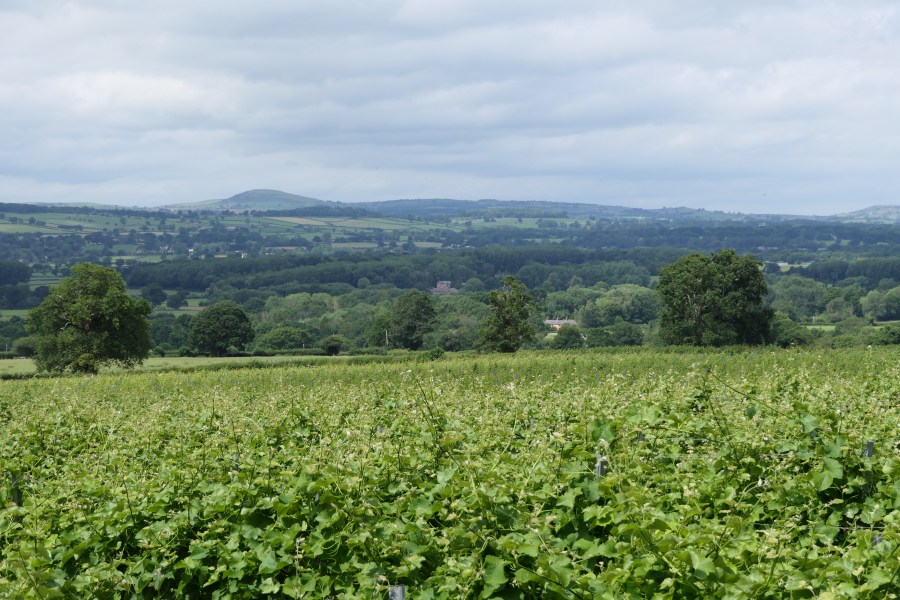Gwinllan y Dyffryn literally translates to The Vale Vineyard. Located in the Vale of Clwyd it is a place of stunning beauty where views of the North Welsh countryside surround the vineyard as if encapsulating it in a blanket of lush hills and scenic views.
The vineyard at Llandyrnog is situated ten miles from the coast and the climate is heavily influenced by a rain shadow from the mountains of Snowdonia with the Clwydian Range to the east. This means that the harsh and forbidding North Wind used to great literary effect by the ancient Welsh poets Taliesin and Dafydd ap Gwilym is somewhat moderated with the vines enjoying a more gentle experience than these poets would suggest.
Husband and wife team Rhys and Gwen Davies both have farming backgrounds and grew up on farms within five miles of the vineyard. They both attended Harper Adams College though not quite at the same time. Gwen and Rhys decided to purchase the property in 2009 and with a refreshing honesty they both explain that they were initially looking for a family home not a farming opportunity. In 2018 a field and barn adjoining their property became available and Gwinllan y Dyffryn – The Vale Vineyard became a reality with the first vines planted in 2019.
Gwen had previously worked for Farming Connect, a Welsh Government funded project that would look at diversification opportunities for farmers. Through discussion groups that she organised Gwen had come across Welsh Vineyards such as White Castle, “Rob from White Castle visited the site in the early days and saw the potential, and was a mentor for us in the first couple of years,” she said.
Rhys is a chartered surveyor by profession and a former Nuffield Scholar “I do have one thing I would change with hindsight, I went to places such as South America, New Zealand and California looking at beef and sheep but not the grapes,” said Rhys with a laugh. He is now the estate manager at Rhug Estate owned by Lord Newborough, 8th Baron Newborough who is known for his commitment to sustainable farming practices. The Estate is run organically and has about 12,500 acres. Rhys is no stranger to diversification as the Rhug Estate have a herd of American Bison. “There is a farm shop on the Rhug Estate that also sells our wines,” said Rhys.
Gwen and Rhys also credit the late Martin Vickers of Halfpenny Green as a real source of support at the start of their wine journey. “We had a chance meeting with Martin Vickers at the Royal Welsh show where Martin and Tina were serving their wine at a reception and that is where the serious thoughts about planting vines and winemaking came from,” said Rhys with warmth. He and Gwen both fondly remember Martin arriving at the property a week after their first meeting and he was a huge help on their wine journey as he was for so many other growers. With a sense of symmetry both Martin Vickers and his son Clive Vickers both went to Harper Adams just like Gwen and Rhys. “Halfpenny Green do a great job as our winemaker,” said Rhys and Gwen together. “They are the experts and as a partnership we want them to be proud of the wines they make with us,” Rhys added.
As testament to the truth of these words Gwinllan y Dyffryn – The Vale Vineyard won Best Alternative Red for its Robin Goch 2023 at the WineGB awards ceremony held in London on 17 July. The Robin Goch is a blend of Rondo, Caberet Noir and Divico. At 12% the wine is well balanced with a fruit forward flavour profile highlighting all that is possible from wine in Wales.
Robin is the name of Rhys dad who has helped to establish the vineyard. “He still does a fair amount of wire lifting and tucking in over the summer,” said Gwen. This really underlines the family unity in the vineyard. Robin Goch also means Red Robin in Welsh and is a playful welsh language nursery rhyme. The use of this name is designed to reflect the land from which the wine is made but in a way that warmly invites all to become a part of the experience and the journey. “We want people to celebrate with us the fact that this is Welsh wine but not push that on them,” said Rhys with humility.
“The Robin Goch is also a very approachable wine even for people who don’t usually like red,” said Gwen. This sentiment is also true of the vineyard itself. With a relaxed atmosphere in a glorious setting there is a feeling of approachability both for those new to Welsh wine and for those with significant wine knowledge.
Gwinllan y Dyffryn – The Vale Vineyard is no stranger to success, with the debut white sparkling made from 100% Seyval Blanc picking up a Regional win at the WineGB awards in 2024 and the debut Sparkling Rosé which is a blend of Pinot Noir Précoce and Seyval Blanc being awarded best sparkling rose at the Welsh Vineyards Association. All the sparkling wines are being released as vintage wines.
On the decision to make still wines, Rhys and Gwen explained that right from planting they wanted to have the options to produce a good variety of wines. “Conversations with Martin of Halfpenny and Duncan McNeill of McNeill Vineyard Management made us think and as Pinot Noir Précoce can be sparkling, rosé or red that is our most planted vine.” The first wines were launched in July 2022 and were a still white and a still rosé. “We have noticed that the reds need time to settle once they are bottled.” There is a 100% Caberet Noir wine but there are currently two blended red wines, “every blended red wine will be unique as it will depend on the varietal yields each year,” said Gwen.
The wines are sold mostly through the cellar door and through events with a few local on trade businesses stocking the wine and local farm shops. Gwen pointed out that the wine merchant Gwin Dylanwad have supported the vineyard from the beginning and are big supporters of Welsh Wine. Gwen and Rhys both agree that this is an exciting time for wine in Wales – as the vineyards and wine styles available are growing, so too are the number of people who are both drinking and championing Welsh Wine.
Gwen is full of praise for the support for new businesses in Wales through various schemes including Food and Drink Wales. “I was able to have a winemaking course at Plumpton this year that was part funded,” she said.
“We have also been able to access technical support that is often fully funded,” she added. Gwen and Rhys are both qualified for spraying but Rhys is the one who undertakes the task and the couple share a joke or two about this. The majority of vines planted are PIWI varieties so Gwen and Rhys use a light touch spray programme and soil sample every other year to insure optimum nutrient levels can be sustained. Rhys pointed to the close tight bunches of the Seyval Blanc as making it particularly susceptible to Botrytis so it is a variety that needs close attention. Gwinllan y Dyffryn – The Vale Vineyard have hosted a Knapsack spraying course and a mist spraying course.
The varieties that are planted include “Seyval Blanc for the sparkling,” said Gwen. There are Rondo vines alongside Pinot Noir Précoce, Caberet Noir and Divico. There are only about 300 Divico vines. “We had intended to plant more Rondo but due to supply we were unable to obtain the Rondo so we have planted more Seyval Blanc,” said Rhys. I asked Rhys if the location of the vineyard in North Wales had anything to do with their inability to source enough Rondo vines and his answer was emphatically no. “We didn’t give a long lead time. We ordered the vines at the end of 2018 and it all happened very quickly and fair play to Duncan McNeill he sorted out all the vines and all the trellising very quickly,” said Rhys appreciatively.
The vines are planted with 2.2m rows and 1.1m between the vines. “We were concerned about the ability to get equipment because we are located in an area known more for livestock,” said Rhys. “I have ordered a de-leafer and trimmer from Lamberhurst Engineering and it will be arriving from Italy,” said Rhys with a smile. “It was so wet last year that we struggled to keep on top of the growth,” he added. “You had a good gym workout last year with the trimmer,” said Gwen with a glint in her eye that proves this husband and wife team take adversity in their stride with humour as their secret weapon. It is said that the couple who laugh together stay together but Gwen and Rhys prove that humour can see you through a year even as disappointing as 2024. “We realised the damage that can be caused by a late frost but we did not quite realise the amount of damage that would be done by a wet flowering,” said Gwen.
The Solaris is planted on SO4 and is incredibly vigorous on the sandy loam soil. The first heavy crop was in 2021 with 2022 and 2023 also producing excellent harvests for the Solaris. Like many vineyards in both Wales and England the weather in 2024 meant that the harvest was severely reduced. Half a tonne was harvested from the Rondo and Caberet Noir which created a still rosé. In comparison the total harvest figure for 2023 was over 10 tonnes. Gwen pointed out that the effects are continuing this season with the vines putting out greater vegetative growth and less fruit.
“We had a video call with Cameron at Vinescapes about the problem and he suggested we do more leaf stripping now so that there is more light on the canes and potentially experiment with some different pruning methods. We are currently on single guyot and we are thinking about doing some double cross over to stress the Solaris vines a little more and manage the vigour,” Gwen explained.
With their farming background, the couple are pragmatic about the unpredictability of different seasons and definitely have a resilience that is impressive. “It averages out but the difference here is that it is averaging year to year not across the year. If you are a sheep farmer you may have a slow start but it will pick up as the same amount of grass usually grows across a year but with vines at flowering you just get one chance,” said Rhys. “It was a bit difficult to go out and prune again in the winter, a bit of psychology comes into play,” added Gwen candidly. “Martin Vickers gave me some good advice last year because he warned me that these years usually come in twos and this was not said in a negative way but made us aware that things will not just bounce back straight away,” said Rhys with warmth in his voice.
Speaking about expected yields really highlights the couples’ farming roots. “It is still early days,” said Gwen. “We have only had three harvests besides 2024 but eight tonnes will be the long term goal whilst keeping everything in balance,” added Rhys.
It is a two and a half hour journey each way to Halfpenny Green so harvest takes place over the weekend in the mornings and the trailer leaves by the early afternoon. Harvesting at the weekend enables the vineyard and the winery team to work together efficiently.
To maintain quality the vineyard has not yet needed to green harvest but the team have been very selective at harvest. “We have a team of friends and volunteers that come back every year and they will be very selective with anything sub standard,” said Rhys. The couple have two children Steffan and Nansi who are both part of the harvest team. Both children have their favourite parts of the process with Nansi part of the organisation of the space and Steffan showing a growing interest in machinery “they enjoy helping out but they can honestly do what they want,” said Rhys with his customary practical approach to life.
At between 60m and 80m above sea level Rhys pointed out that the vineyard has never had any problems with frost. Local knowledge has played its part in the choice of planting vines in this location as Rhys explained that when the conditions are right it is possible to actually see the frost pocket sitting below the vineyard. “The frost rolls down to the River Clwyd which is between us and Denbigh,” said Gwen. The vineyard is also at least a couple of degrees warmer than the farms where Rhys and Gwen grew up.
“Initially I wanted sheep,” said Rhys with a laugh. “My family still have a pedigree flock of Lleyn,” he said fondly. Where many vineyards have to think about incorporating regenerative practices with sheep this practice has naturally become a part of the vineyard calendar. “We stop mowing in the middle of August and we bring the sheep in after harvest and they stay until the end of February. We split the vineyard into two with an electric fence, and the sheep graze one half and then the other. If you prune with the sheep in the vineyard they just drag the prunings everywhere,” said Rhys with a knowing smile. “We also flail the prunings back in every other row,” explained Gwen.
The tasting barn that features a full picture window framing the surrounding countryside was developed during the Covid-19 lockdown. “This barn was in a bad state of repair and every time there was a storm in the morning you would get up and see more slates that were balancing just on the edge of the roof,” said Rhys with a smile. The tasting barn is now a beautiful space where visitors can enjoy both the wines and the views at the same time.
The vineyard is open for tours and tastings on Saturdays from May to September. Both Rhys and Gwen conduct the tours. “We take people through the vines and tell them how the vineyard was established,” explained Gwen. The tour also addresses the differences between the reality of the climate and how people might assume the climate to be. This is something that is particularly pertinent to vineyards across Wales with the perception of what the climate delivers, often differing wildly from the reality. As an example, Gwen explained that the Solaris has been among the first fruit delivered to contract winemaker Halfpenny Green so the site is often slightly ahead. We are in close proximity to some of the sunniest places on the North Wales Coast. “Dr Alistair Nesbitt told us that this area in Wales along with an area of Anglesey are of significant climatic interest,” added Rhys.
“It is great to see the reaction of the people on the tours,” said Gwen. In response to a question about the nationality of the visitors Gwen laughingly responded that in the first year it was mostly local farmers but on a serious note she pointed out that a large number of visitors come from cities such as Liverpool but visitors also come from Dorset, Poole, Royston and they even had a visitor from America who had learnt Welsh during the Covid-19 pandemic. “We do gift vouchers for the tours and they seem to go everywhere,” said Gwen. Gwen and Rhys are amongst a handful of Welsh speakers that are part of the Welsh Vineyards Association and therefore are able to offer Welsh Language tours of the vineyards. Gwen and Rhys work with organisations that are promoting the Welsh language and often visitors to the tours are those who are learning the Welsh Language. This connection to the land and the language creates something truly special at Gwinllan y Dyffryn – The Vale Vineyard.
The relaxed atmosphere and the beautiful views are complemented by the fantastic wine but more than that Gwinllan y Dyffryn – The Vale Vineyard is a place of balance. Not just in the wines and nature but in the family atmosphere and the way Gwen and Rhys are trying to give back by supporting the community along with other growers who may be thinking about diversifying into wine. This balance is achieved with a sense of humour and a touch of serenity that is extraordinary and charming in equal measure.
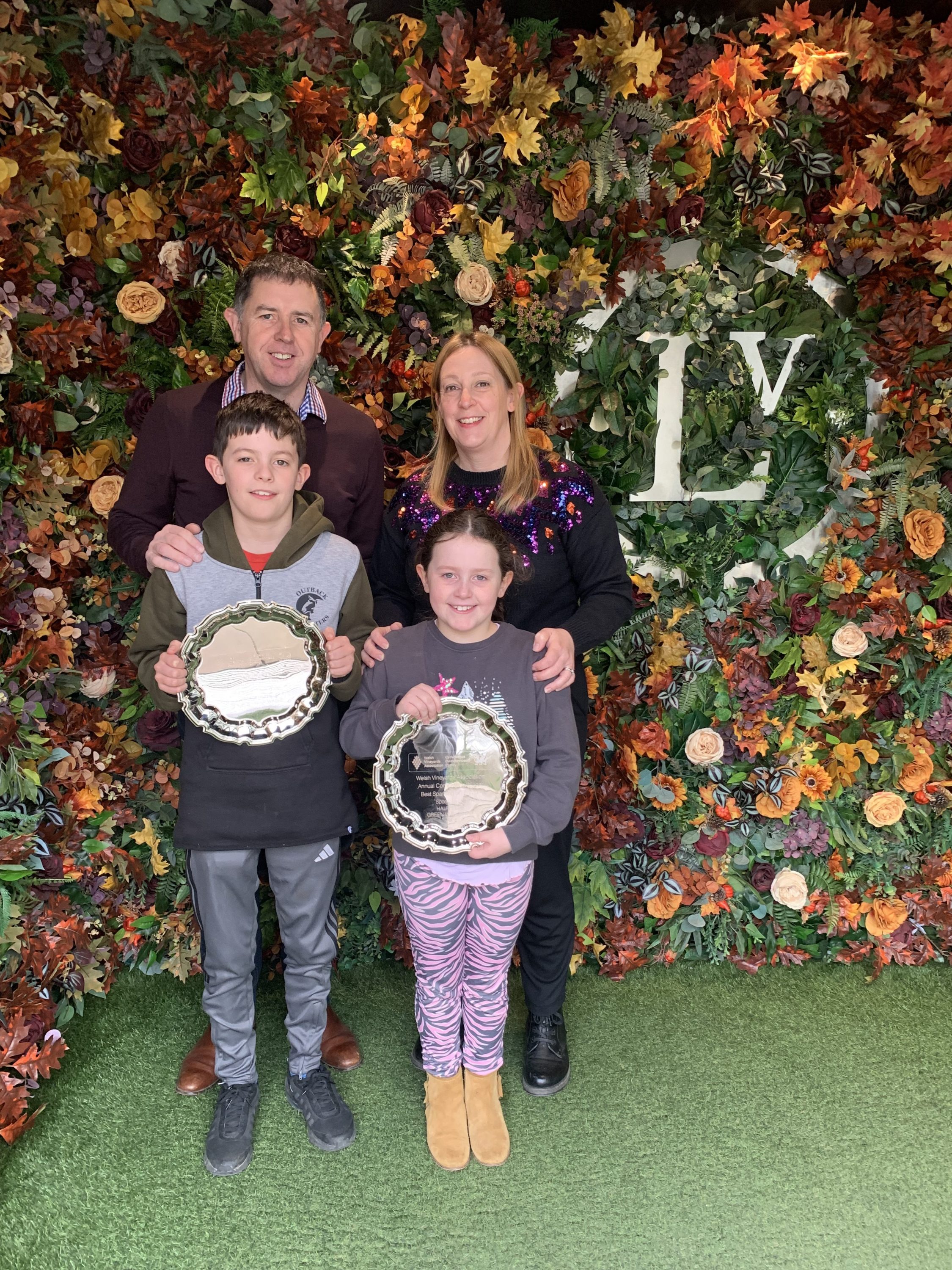
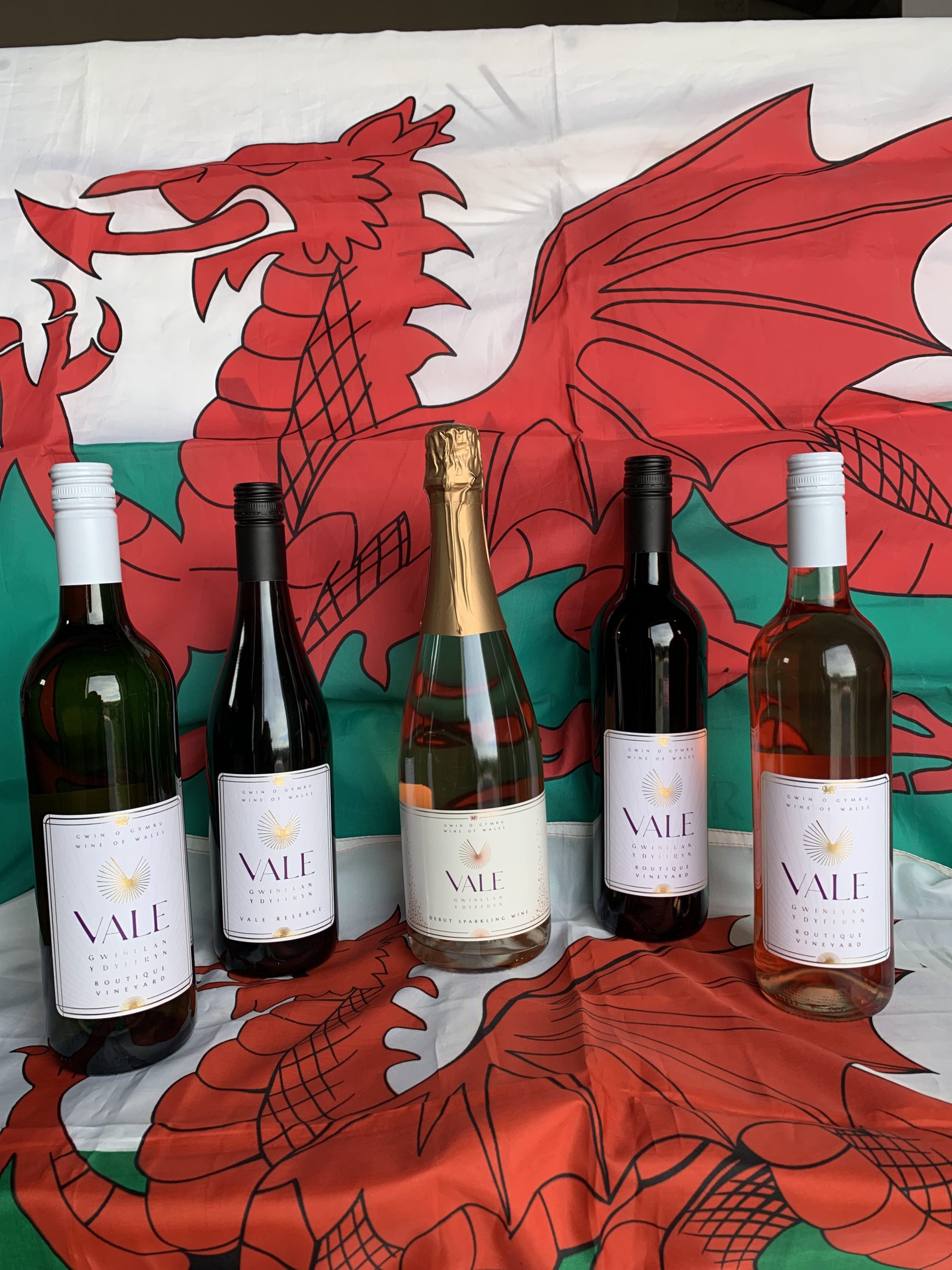
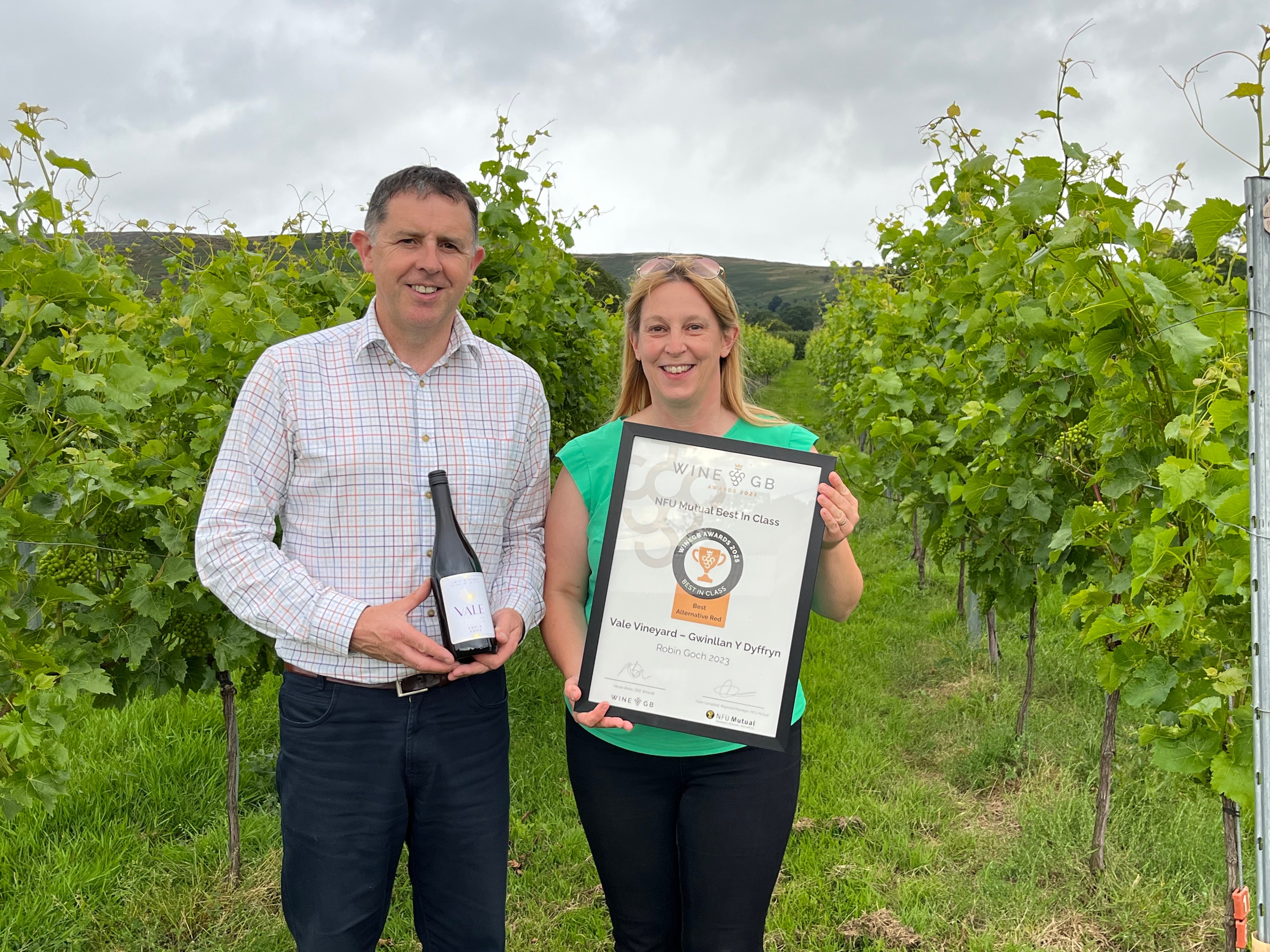
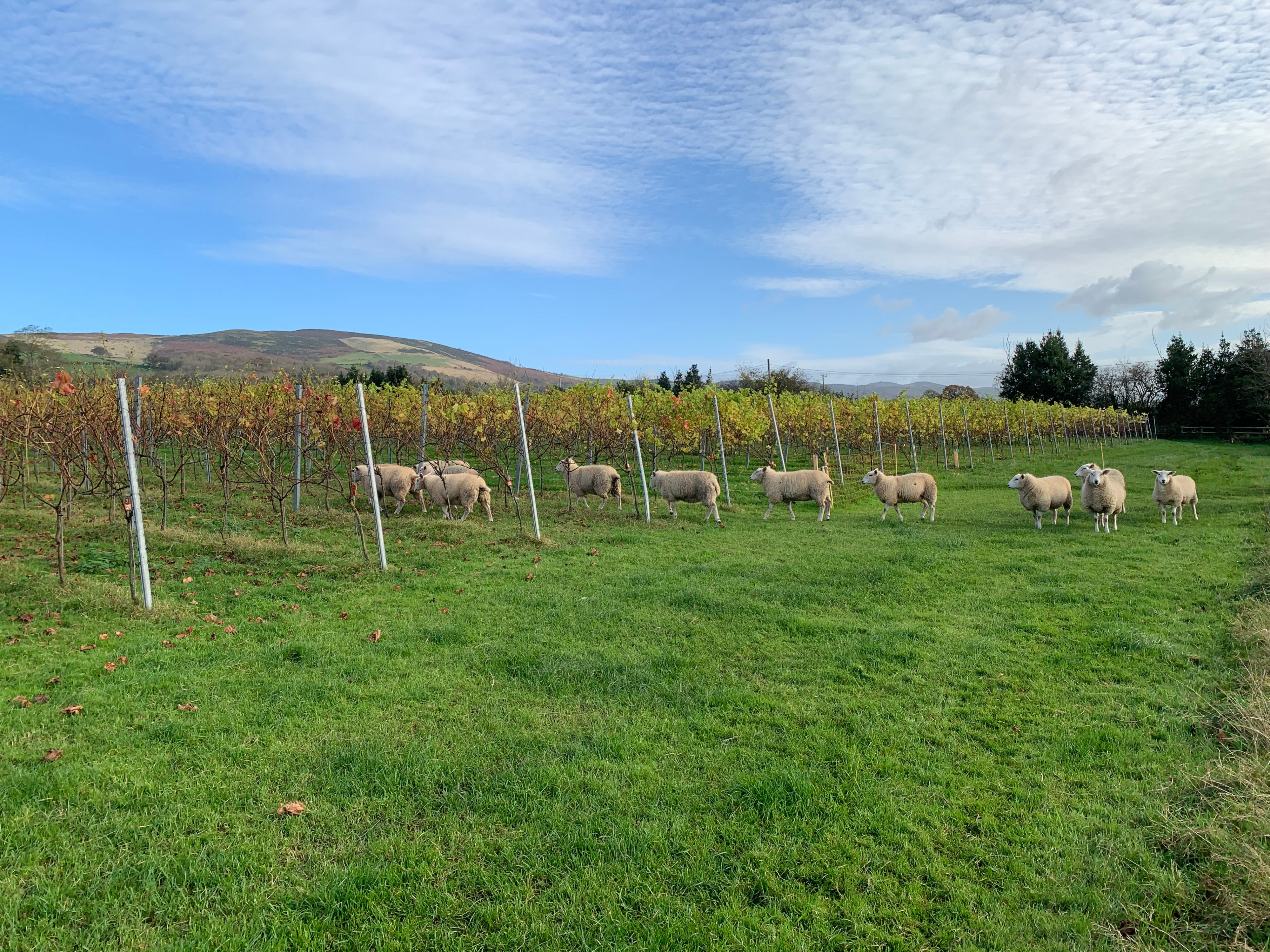
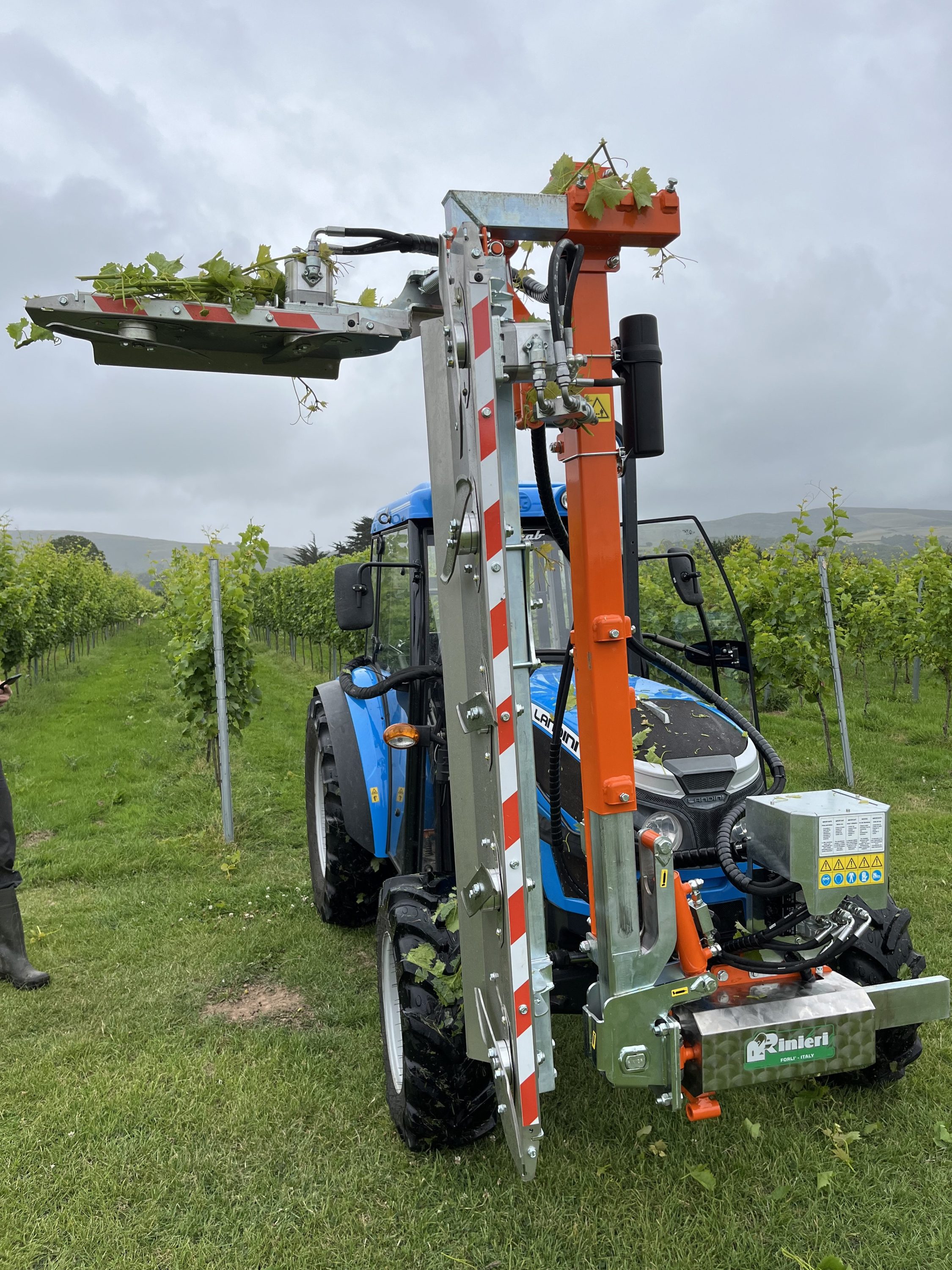
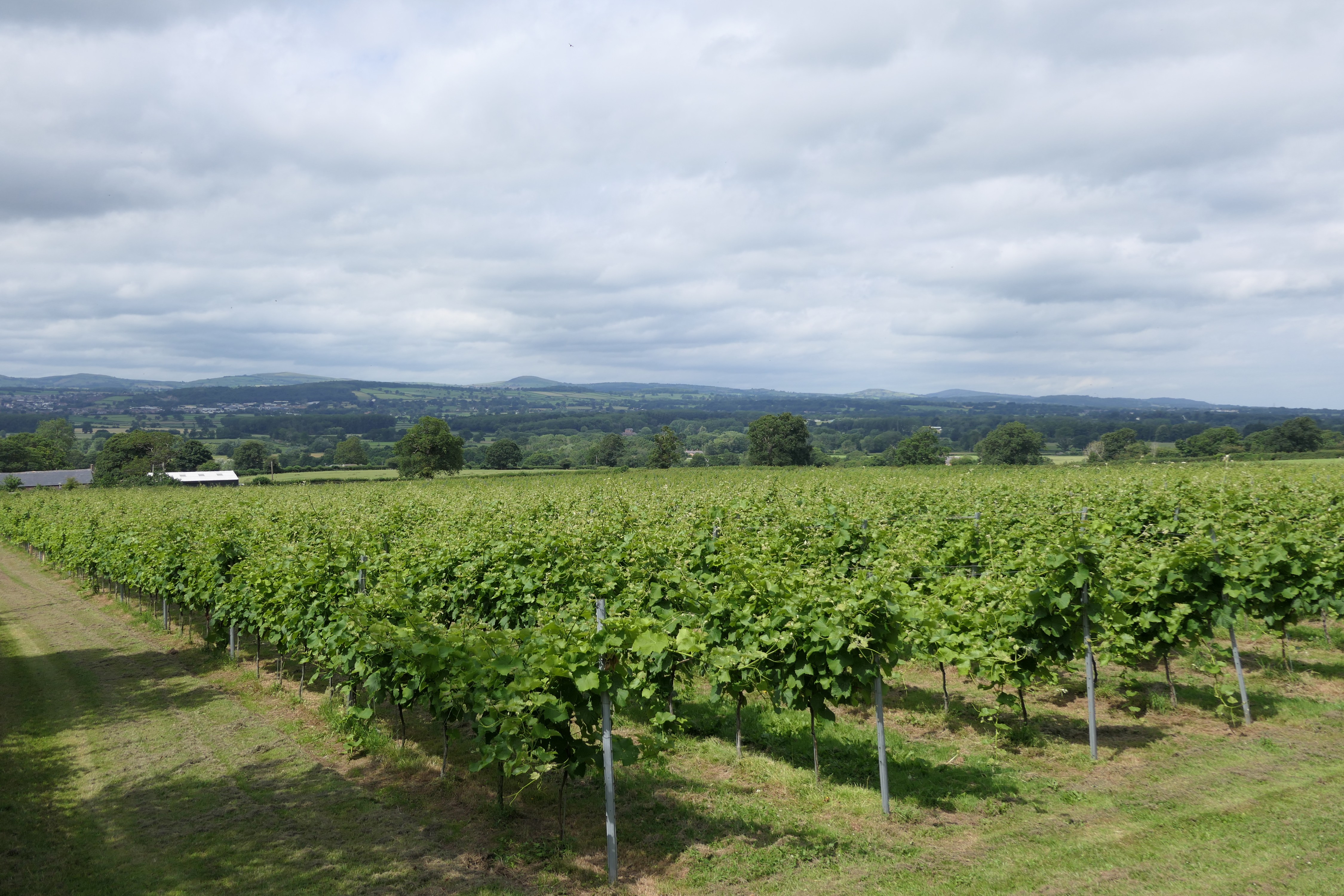
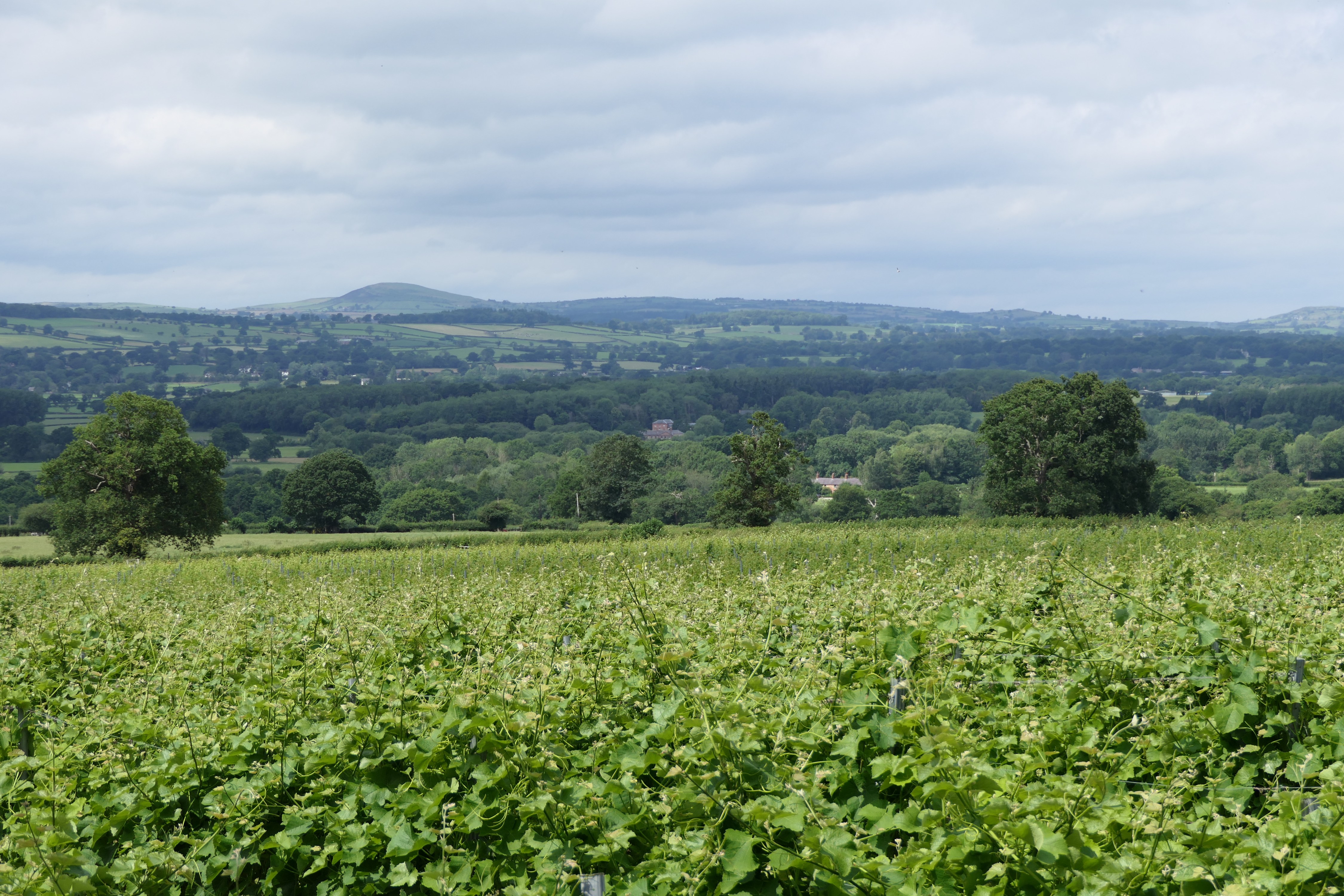
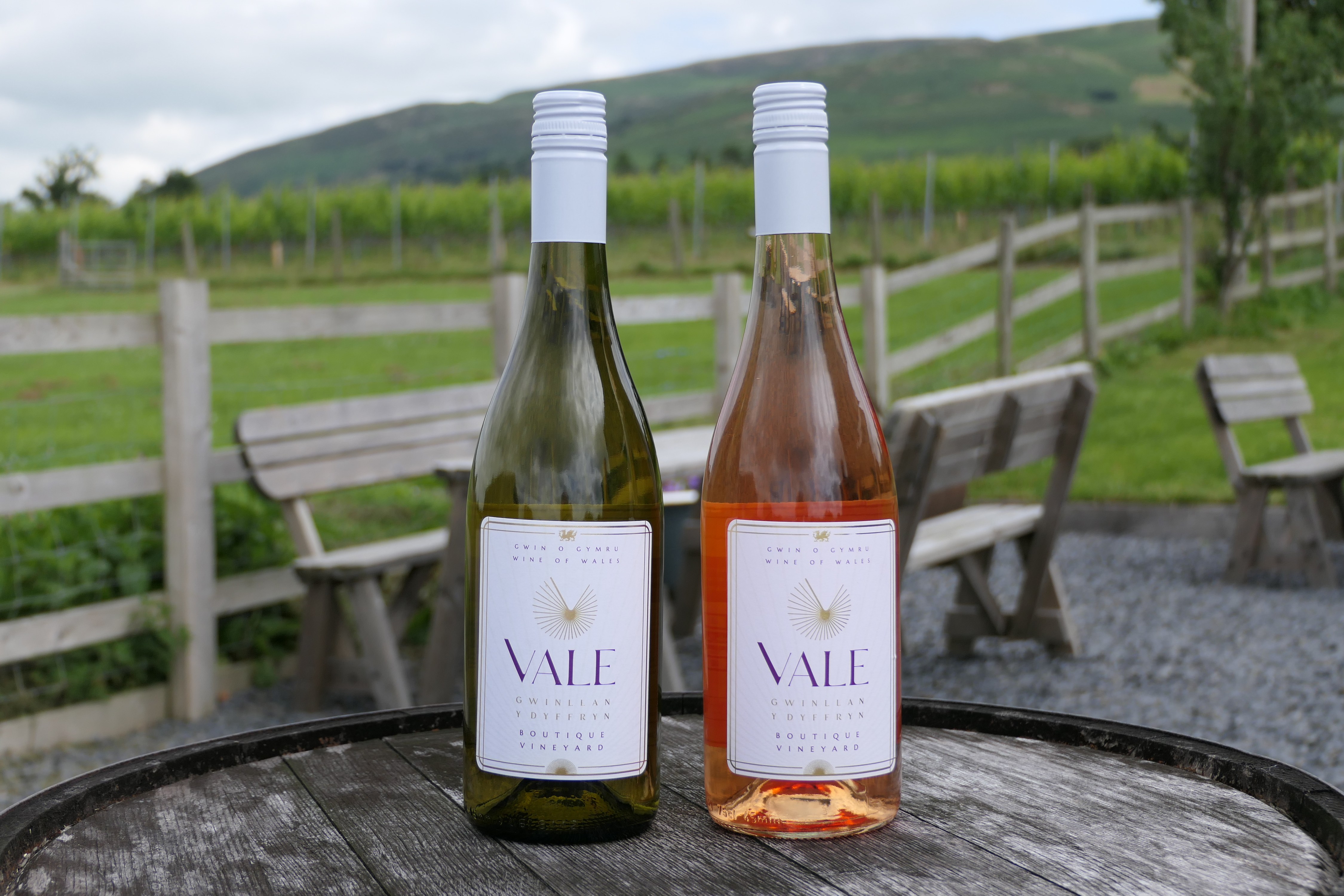

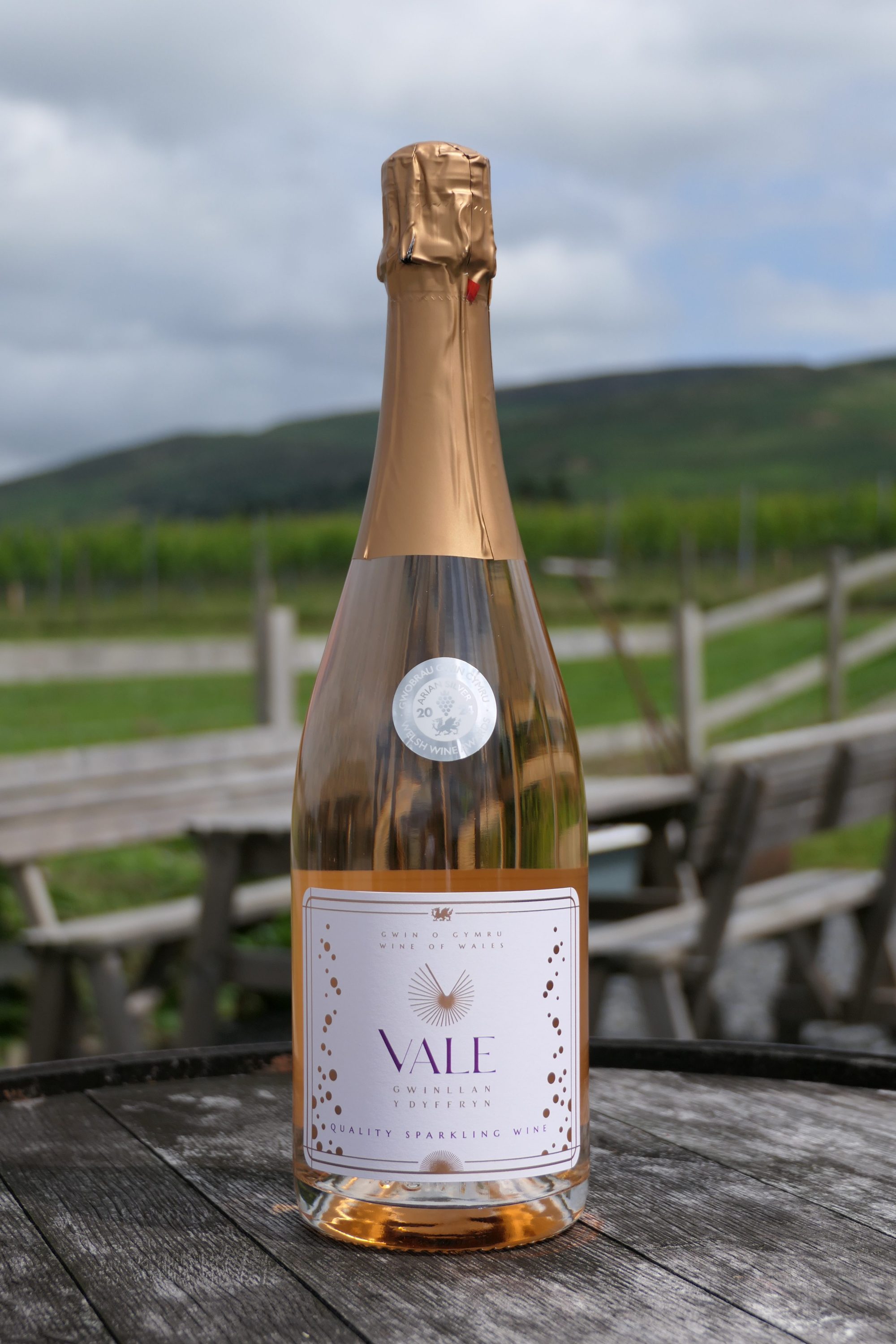
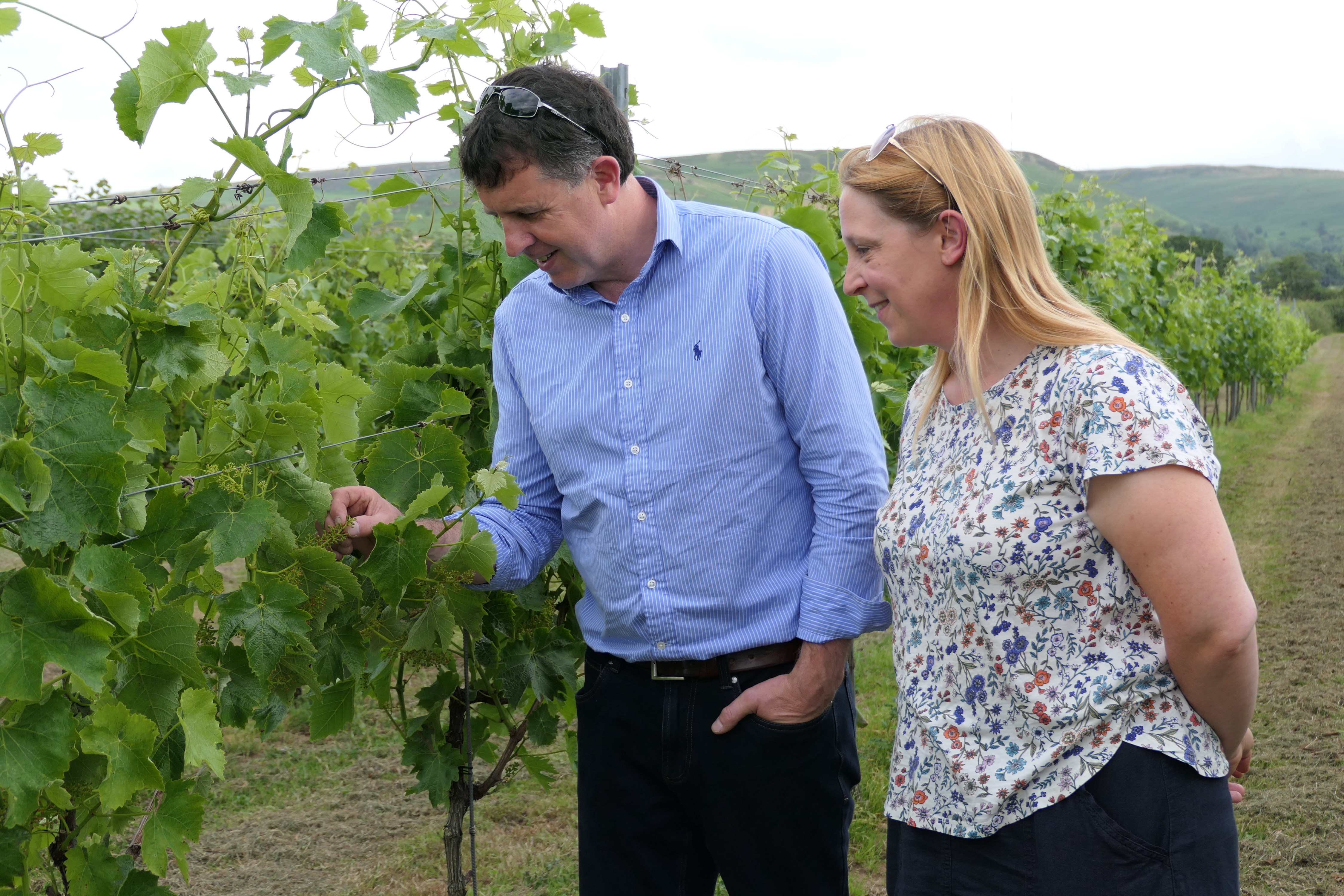

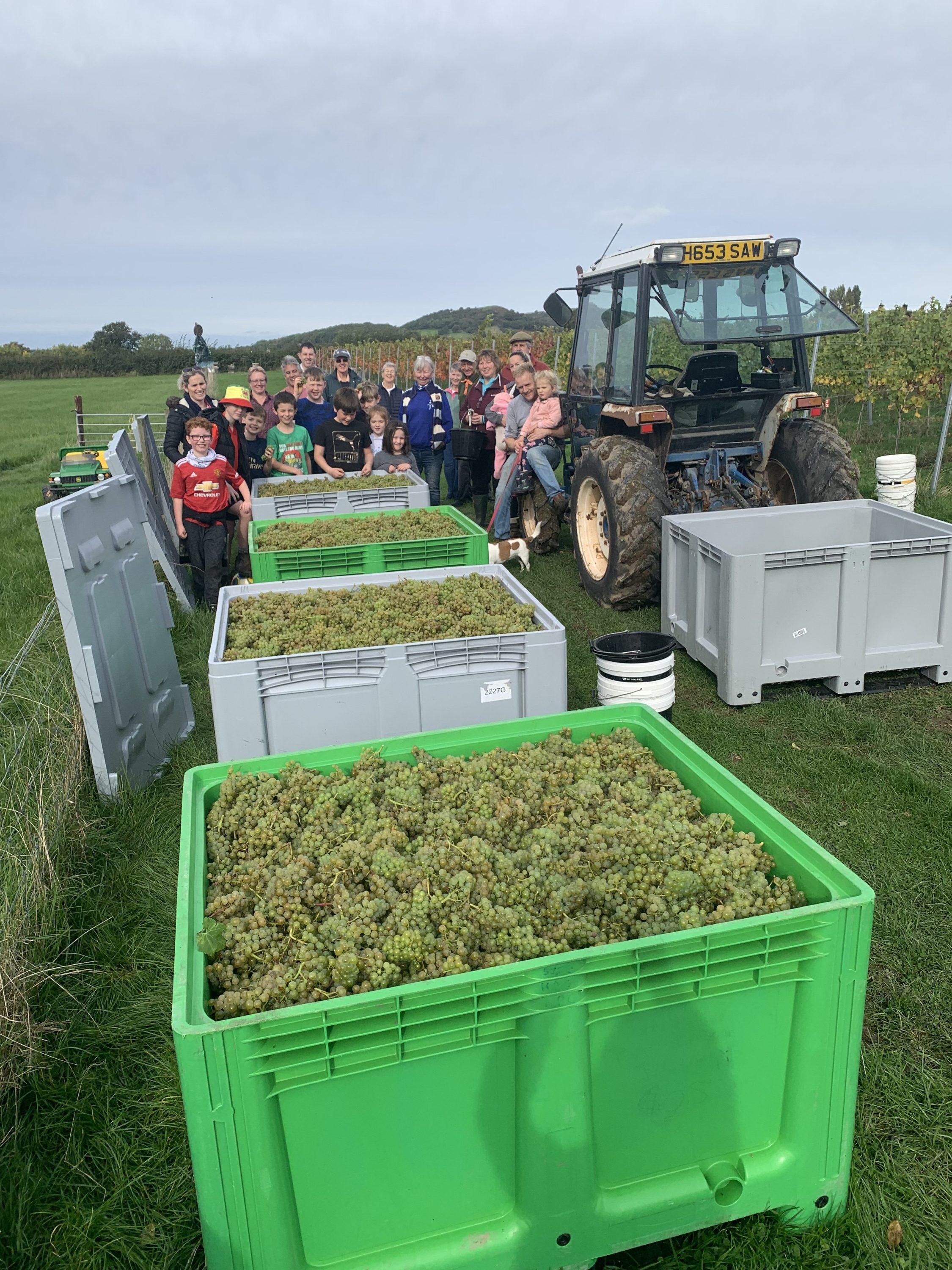
For more like this, sign up for the FREE Vineyard newsletter here and receive all the latest viticulture news, reviews and insight

